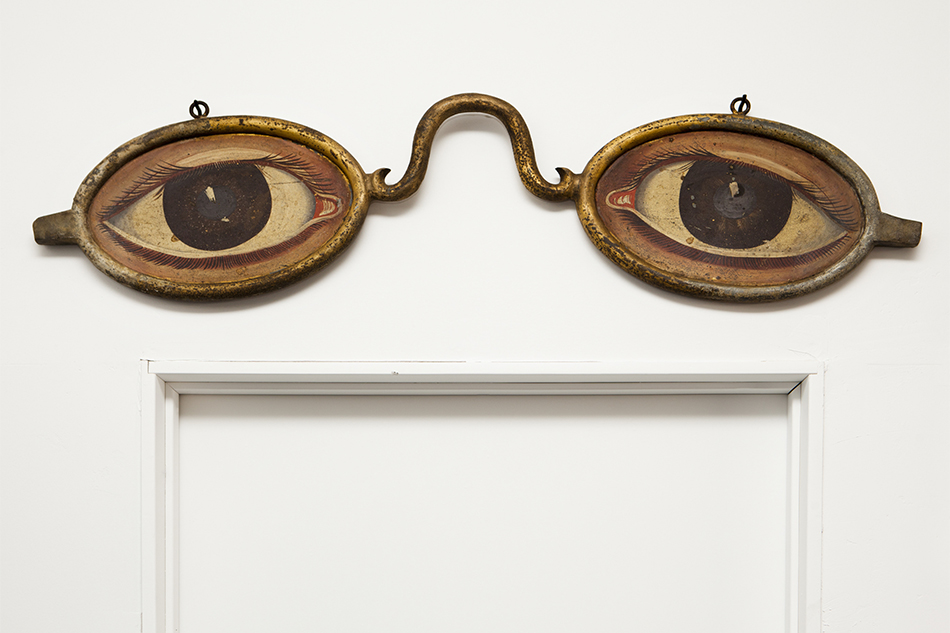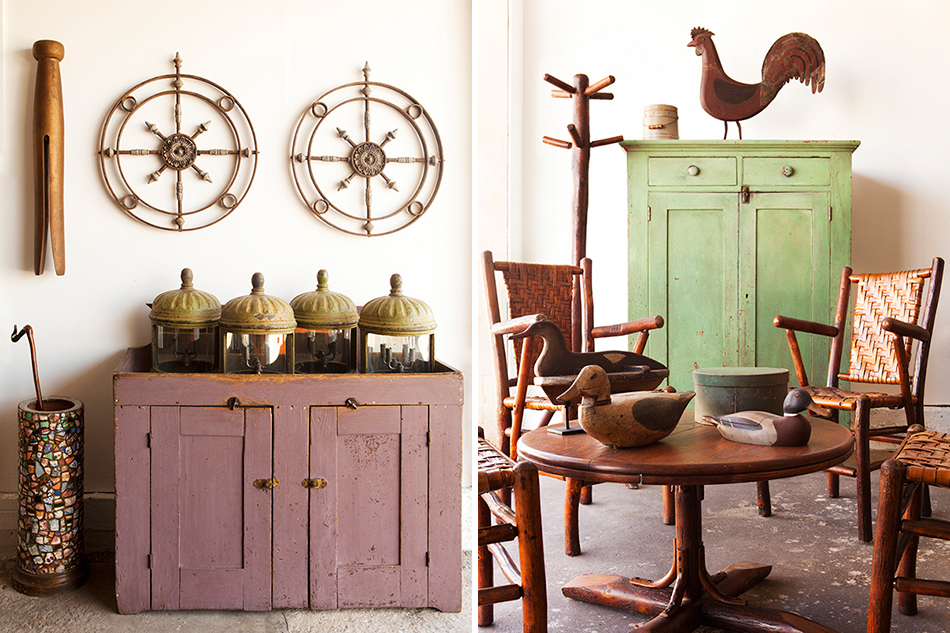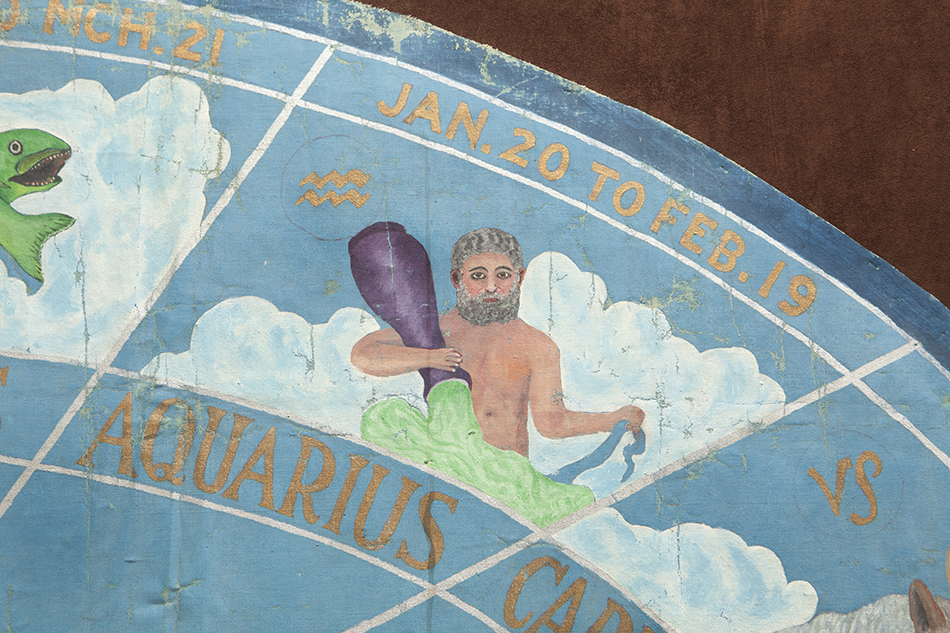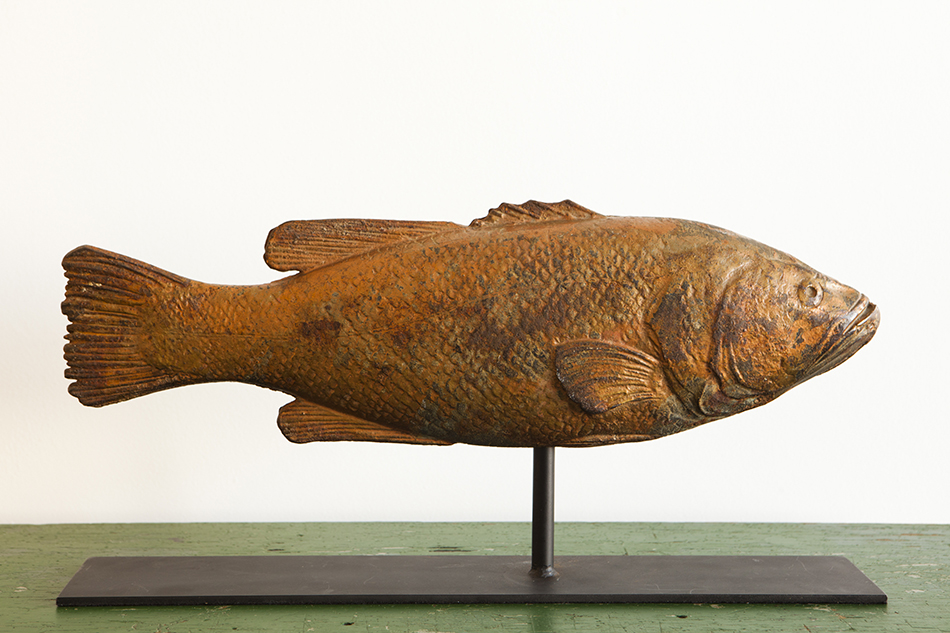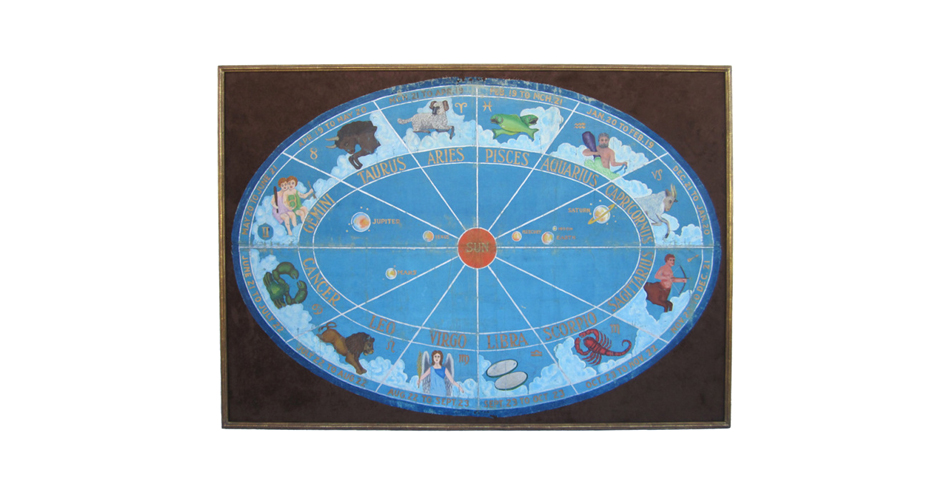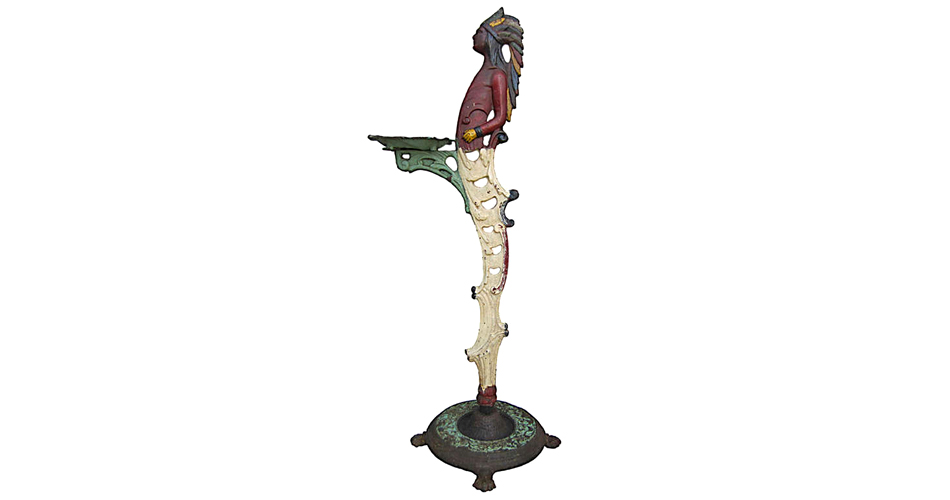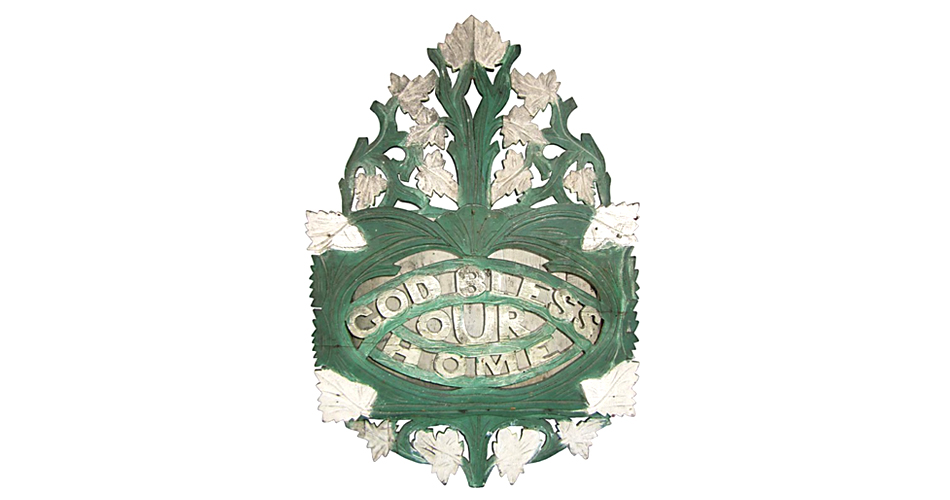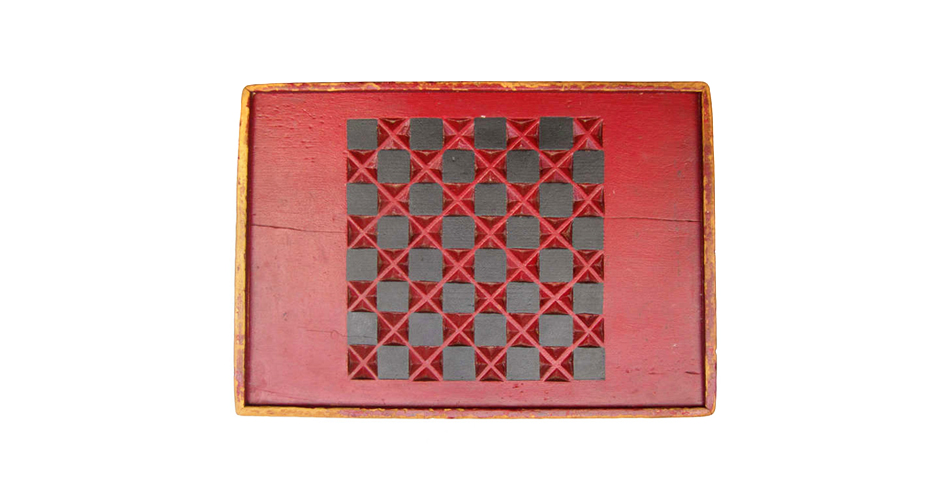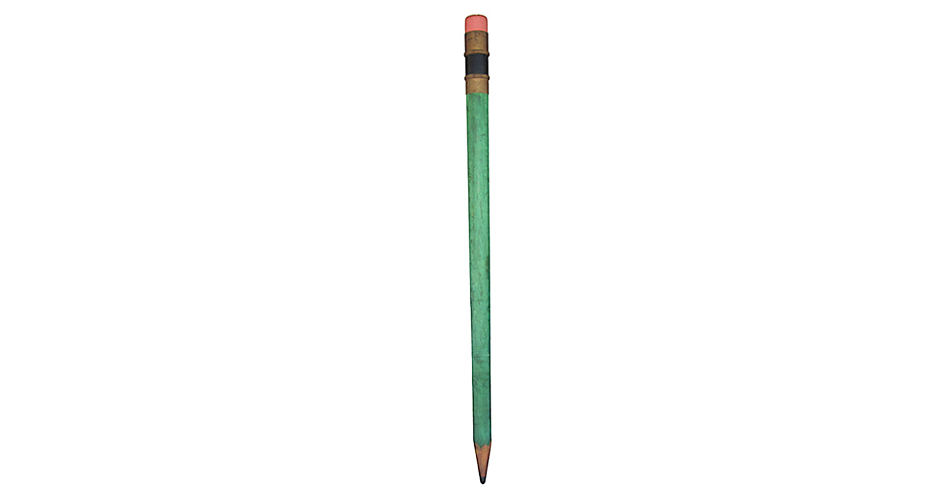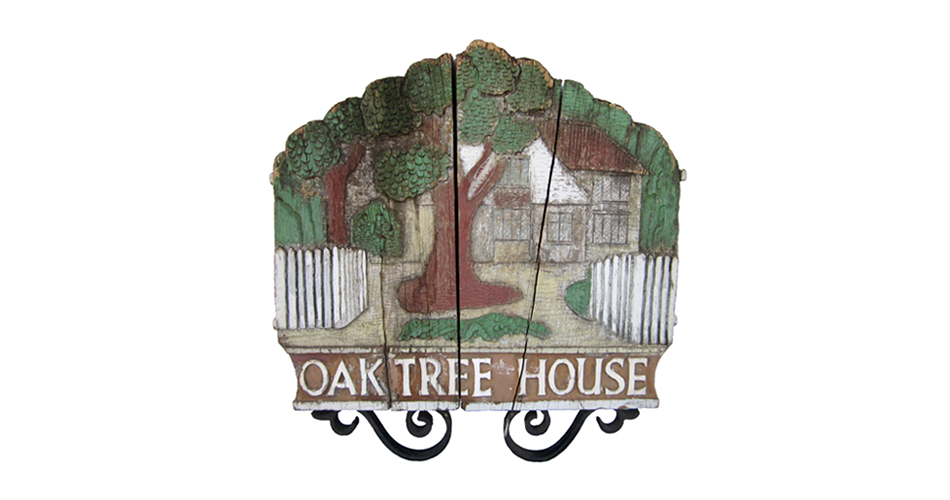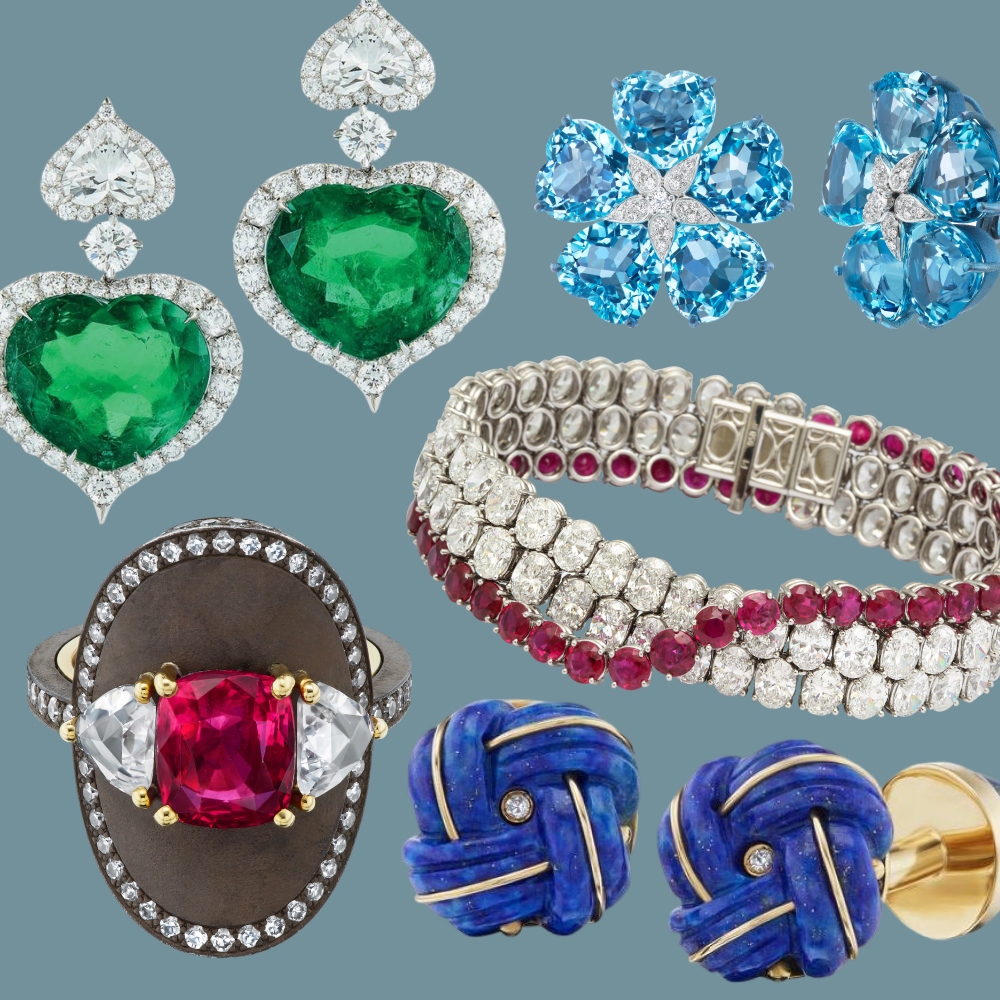
January 29, 2014Americana specialists Diana Douglas and Michael J. Ogle of American Garage started the business out of a rental property they owned. Top: Playful and unusual items abound, including, from left, a pair of mustard-and-red carousel mirrors, a large-scale oval canvas astrology carnival banner (ca. 1930) and a set of four shooting-gallery targets in the form of playing card suits.
The origins of American Garage are as humble and straightforward as its name suggests. It was just after the Northridge earthquake in 1994, and Michael J. Ogle and Diana Douglas were facing a significant remodel on a heavily damaged rental home they owned in Los Angeles’s San Fernando Valley. Having done a few antiques shows, they decided that instead of renting the house after the remodel, they’d take the next step by setting up shop right there. “Since we did not live there, we set up our inventory in room-like settings,” says Douglas. “It was by appointment only, and everything in all the rooms, be it the bedrooms, living room or kitchen, was for sale.”
Designers flocked to their early Americana-in-situ emporium, and the business thrived for almost a decade, during which the couple “would lock the doors whenever we wanted to travel,” says Douglas. “That was our start; our springboard. People knew who we were. That was also when the antiques craze started. You could literally put a piece out, and there would be five people who would want it. It was just a crazy, crazy time in the business.” By 2002, they knew it was time to create a more traditional retail presence, so they settled in a space along L.A.’s dealer-rich Third Street between West Hollywood and Beverly Hills and started selling their funky assortment to such designers as Karin Blake, known as the queen of folk art. They flourished there for another eight years and then, in large part owing to all the inventory they were selling online, shuttered that location and moved to their current by-appointment space just around the corner in a blink-and-you’ll-miss-it alleyway.

A circa-1880 set of haberdashery display figures stand atop a mid-19th-century wooden work bench at American Garage, a gallery of Americana in Los Angeles. In the background, painted- and incised-wood game boards line a circa-1840 wooden railroad waiting-room bench.
Here, Douglas and Ogle carry on as they always have, offering all manner of cleverly staged trade signs, patinaed shooting-gallery targets, carriage clocks, whirligigs, painted furniture and one-of-a-kind craft pieces. Among the latter is an especially intriguing curiosity: a mirror framed by haunting, craggy branches that appear to reach out toward the viewer as if to pull him into the mysteries it holds. “These are rare pieces — even in a super-modern L.A. swank home, you can take one painted piece, for example, put it in a room full of modern industrial furniture, and it just takes off,” says Ogle, whose wheelhouse is 18th-to-early-20th-century American country antiques. Adds Douglas: “They have soul and were made by serious artists.”
For Douglas, who grew up outside Chicago, collecting was natural from the beginning. “I was a little poor-man collector,” she says. “It’s what I did when I was a young girl; I would look for painted furniture. When I was first on my own after college and had no money, I couldn’t afford store-bought stuff to decorate my apartment. But I could go find little things. I got into California pottery — it was like the whole world opened up.”
She continues: “I remember my godmother visited me from Chicago and said, ‘Do you need some money, honey? The furniture…you poor thing. The paint’s peeling.’ I said, ‘That’s worth about ten times more than the little China closet that you want me to go buy.’ ”
Douglas started her career working (by “sheer accident”) in the music industry but went back to school to study art history and architectural design. She ran her own design practice until 1991, when the 1980s real estate boom fizzled — along with most of her residential commissions — and a friend suggested she do a booth at a new antiques co-op in Studio City. Meanwhile, Ogle — just Douglas’s friend at the time — was working in the aerospace industry, but he, too, had a longtime interest in furniture, having spent many hours of his youth in a tiny town near Haddonfield, New Jersey, studying the work of a neighbor who was a master cabinetmaker. He agreed to join Douglas in the antiques booth endeavor, at which point they promptly fell in love.
“These are rare pieces — even in a supermodern, swank L.A. home, you could put one painted piece in a room full of industrial furniture, and it just takes off.”

A painted-wood pencil trade sign stands on point atop an iron industrial-die cart. Behind it, a sailor whirligig sits atop a 19th-century chairmaker.
Ogle left his job shortly after the San Fernando Valley venture. “We thought, ‘We can do this,’ and we literally walked off the cliff,” Douglas says. They started going on buying trips to build an inventory. Their first stop was Pennsylvania and New Jersey, both because of Ogle’s roots and because of the area’s rich stock in all things Americana. “Then somebody told us to go down to Maryland,” says Douglas. “We were like, ‘Maryland?’ Again, blind as a bat, we just went. We had no idea what we were doing. In those days, there were so many antiques stores and dealers and tag sales and farm sales; there wasn’t enough time or money to see it all.”
“We would either run out of money, or run out of room in the truck,” says Ogle with a laugh. “It’s been a hell of a ride, I’ll tell you.” Though happenstance may have shaped their initial days, their process today is entirely deliberate. “We decided early on that we wanted quality to be our hallmark,” says Ogle. “It takes twenty years to develop a serious, collector-level clientele. They know what they’re looking at. When you sell something for six figures, you better believe the buyer knows what he or she is looking at.” His understanding of detail comes in handy when, knee-deep in furniture in a dusty warehouse, Ogle can take one look at a piece and recognize its importance right away.“ Anything from hand-dovetailing to a pinned drawer to a butterfly bridge joint,” he says.
Douglas and Ogle are dedicated to the thrill of the hunt, and their true home is still on the road looking for the next great find. It won’t be long now before the pair will roll the doors shut for a few weeks and head out in their Sprinter van to their usual secret sources across the country, the landscape stretched out before them, the wind at their backs and just their discerning eyes — and a little bit of luck — to guide them.
Visit American Garage on 1stdibs
TALKING POINTS
Diana Douglas and Michael J. Ogle share some thoughts on a few choice pieces.

